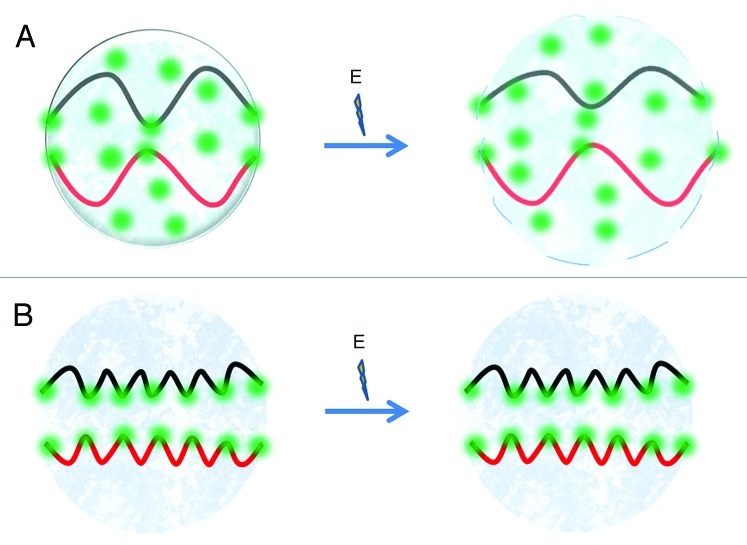Figure 1. Drawing schematizing the interaction between interphase chromosomes and the nuclear matrix (NM) (A) In cells with proliferating potential interphase chromosomes (only two are shown as black and red fibers) are attached the peripheral NM but to very few elements of the internal NM (green spots) thus forming a relatively limited number of rather large DNA loops. In this configuration chromosome DNA preserves significant structural stress and so it has a high dynamic potential. Input of biochemical energy may easily destabilize the nuclear higher order structure, defined by the DNA-NM interactions, leading to karyokinesis and mitosis. (B) In TD cells the interphase chromosomes are organized into a large number of shorter DNA loops attached to many elements of the internal NM, this organization dissipates most DNA structural stress and so DNA loses most of its dynamic potential becoming and integral component of a very stable structural system (perhaps of the tensegrity type) constituted by a large number of DNA-NM interactions that cannot be destabilized by the available input of biochemical energy. Under such a configuration the nucleus cannot be disassembled and so no mitosis may ensue. Thus in order to preserve a proliferating potential the cells cannot dissipate DNA structural stress beyond a certain threshold without becoming stably post-mitotic.

An official website of the United States government
Here's how you know
Official websites use .gov
A
.gov website belongs to an official
government organization in the United States.
Secure .gov websites use HTTPS
A lock (
) or https:// means you've safely
connected to the .gov website. Share sensitive
information only on official, secure websites.
